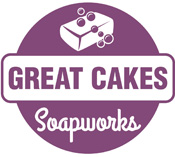Making Lotion: Acquiring Ingredients
This is part four of the tutorial on making your own lotion. Please go back and read the introduction, preparation, and lotion making equipment posts before proceeding with today’s lesson, which is acquiring the ingredients you will need.
There are four basic parts to a lotion recipe: liquid phase, oil phase, emulsifier (which is added to the oil phase), and heat-sensitive additives such as the preservative.
Liquids – The obvious choice would be distilled water. However, you could also use aloe vera juice (not gel), and/or hydrosols. This will be about 70-80% of your total recipe. Distilled water is the easiest to acquire and works wonderfully for a starter recipe – or even an advanced recipe. I discovered after making several test batches of facial moisturizer that sometimes a simple recipe is better than a complex one. Fewer ingredients means fewer possibilities for negative skin reactions.
Emulsifier – Again, I recommend polawax (emulsifying wax), or possibly BTMS (behentrimonium methosulfate) which was the favored emulsifier in Anne-Marie’s lotion making class at the Handcrafted Soapmaker’s Guild this year. Recommended usage: 4-5%
Oils & butters – Soapmakers can use their imaginations on this one, unless you are a three-oil (coconut, palm and olive) only soaper. Then you might have to branch out. Shea and cocoa butters make nice lotions, as well as avocado oil, apricot kernel oil, jojoba oil, etc.
A few things to keep in mind when choosing your oils and butters:
1. Color – For example, if you want a nice, white lotion, you should choose clear jojoba over golden.
2. Texture/Solidity – Refined shea butter may cause graininess in your lotion; unrefined is a better choice. Also, the thicker the butter, the thicker the lotion. If you use a brittle butter such as cocoa, it will make your lotion thicker than using shea butter.
3. Vegetable sources are best – This is purely my own opinion. I have actually heard that lard lotions can be quite nice, but I just can’t imagine what it must smell like!
4. Research the oils that will provide the nutrients and skin benefits you are wanting.
Recommended usage: varies depending on the amount of solid ingredients, but somewhere in the 10-15% range.
Additives – This includes all your heat-sensitive ingredients such as preservative, fragrance, vitamin E, extracts, etc. Always use the manufacturer’s recommended usage rate for preservative; fragrance could be synthetic or natural essential oils, but should always be skin-safe, usage rate 0.5-1%; vitamin E and extracts are minimal amounts, usually 0.5-3%.
Resources for Ingredients:
If you didn’t find everything you need from Lotioncrafter in WA or The Herbarie in SC, here are some other places that offer quality ingredients: Formulator Sample Shop in NC, Majestic Mountain Sage in UT, From Nature With Love in CT, Brambleberry in WA, Wholesale Supplies Plus in OH, or Texas Natural Supplies, located in – you guessed it – Texas. I’ve probably left out several other quality suppliers, but these are the ones I’ve either used myself or have heard good things about. It helps to order from a company that is closer to where you live so that you can save money on shipping.
Next lesson: Formulating a Recipe
Page with Comments
Comments are closed.

I am wondering if you have tried that preservative glucose oxidase & lactoperoxidase or heard much about it? It is the preservative that Burts Bees started using. I am interested in trying it but I am having trouble finding where to buy it. Any info or suggestions?
I haven’t heard about it, Danielle. I’ve seen more natural CO2 extracts being offered, but I have not tried them myself, nor do I know how effective they are. Wish I could be of more help!
Resources for ingredients – I went to both Lotioncrafter The Herbarie and they have min orders that are crazy. why do i need to purchase an item for 100 or over 30 i went to formulator sample shop because i could purchase 2 or 8 oz funny thing is formulator sample shop is a lot lower in price
i was unsure about an ingredient and they provided me a free sample when i placed orders there they also give free gifts its so cute they haev tons of natural and organic ingredients but you have to ask for it. i am not affilated with them but i had placed an order for natapres a few months back at lotioncrafter and i didnt get a response to my email yet formulator sample shop helped me formulated it
@Melizza – Thank you for bringing this new vendor to my attention. I will add them to the list. Lotioncrafter and The Herbarie are both trusted suppliers for me. Lotioncrafter’s minimum is just $12.50 and The Herbarie’s is $30. They have to do this because it can take a lot of time to fill smaller orders, and not every business can afford it. I have had nothing but excellent customer service from Lotioncrafter. In fact, if I leave my phone number, Jenn will often give me a call rather than answer my question by email. She even replaced a ph meter for a higher quality model when I was having problems with the least expensive one.
I just received an email, new customers for the Formulator sample Shop receives free shipping, the code is NEWC
Also they are having a sale, if you use code FOL10 as coupon code you get 10% off. i dont know how long that will last but i placed an order